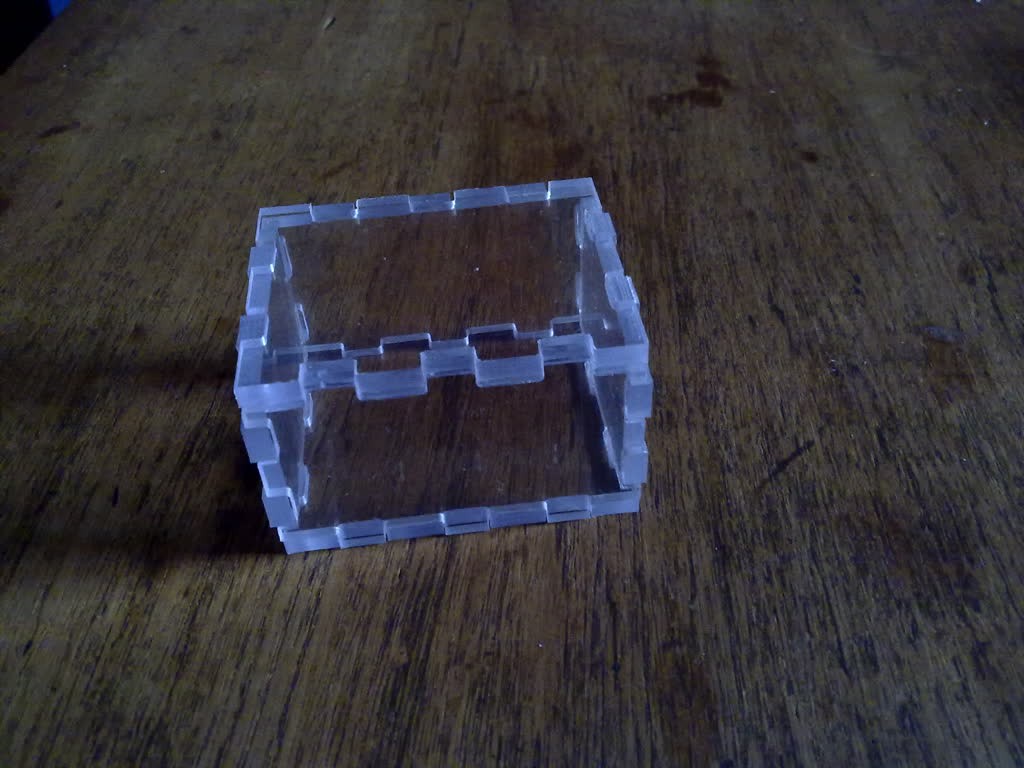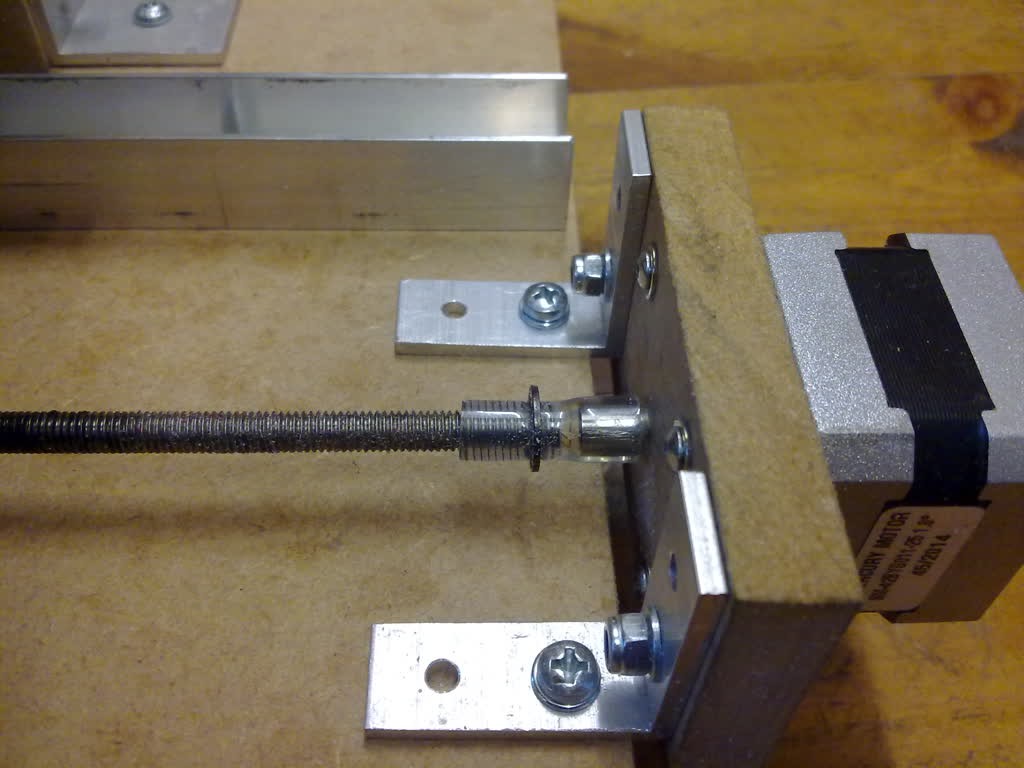Introduction
This was my starting point: Easy to Build Desk Top 3 Axis CNC Milling Machine by Tom McGuire. However polycarbonate seemed expensive for a project that I might never finish and I couldn't find steel pipe for the stand so I decided to use MDF for the support structure and platforms. Once I starting putting bits together I quickly realised that self-tapping screws don't work in MDF so lots of things had to change.
The machine is built and working but isn't finished yet. There are many enhancements and improvements I'd like to make. Now that I have a milling machine I can make better bits for my milling machine.
The overall dimensions are 350mm x 450mm x 400mm high. The table is 150mm x 150mm.
Control Software
- Universal-G-Code-Sender on a PC as the human interface for Grbl (see below). It lets me jog the machine in any direction, send Gcode files, etc.
- Grbl is software loaded onto an Arduino Uno which accepts Gcode and controls 3 Big Easy Driver boards each connected to a stepper motor on the milling machine.
Control Electronics
Here is a picture of the control electronics as they currently stand:

On top of the Arduino Uno is a Proto-Pic Breadboard Shield which breaks out most of the useful Grbl control signals. I'm only using the 3 stepper driver outputs at the moment but limit switches, start, hold, abort, spindle and coolant controls are there for the future.
The 3 red boards are the Big Easy Driver boards and the square strip-board simply distributes power to each of them.
The I/O cables are probably obvious:
- USB cable from the PC transmits Gcode statements from the Universal-G-code-Sender software.
- The barrel connector with the red tape supplies 5V to the Arduino.
- The barrel connector with the yellow tape supplies 12V to the driver boards.
- The 3 sets of 4 multi-coloured wires go directly to the 3 stepper motors.




















 Caleb Peters
Caleb Peters
 Christophe Machet
Christophe Machet
 charliex
charliex
 Douglas Miller
Douglas Miller
Amazing! I love the idea, I will try this one. http://waterrestorationnashvilletn.com/